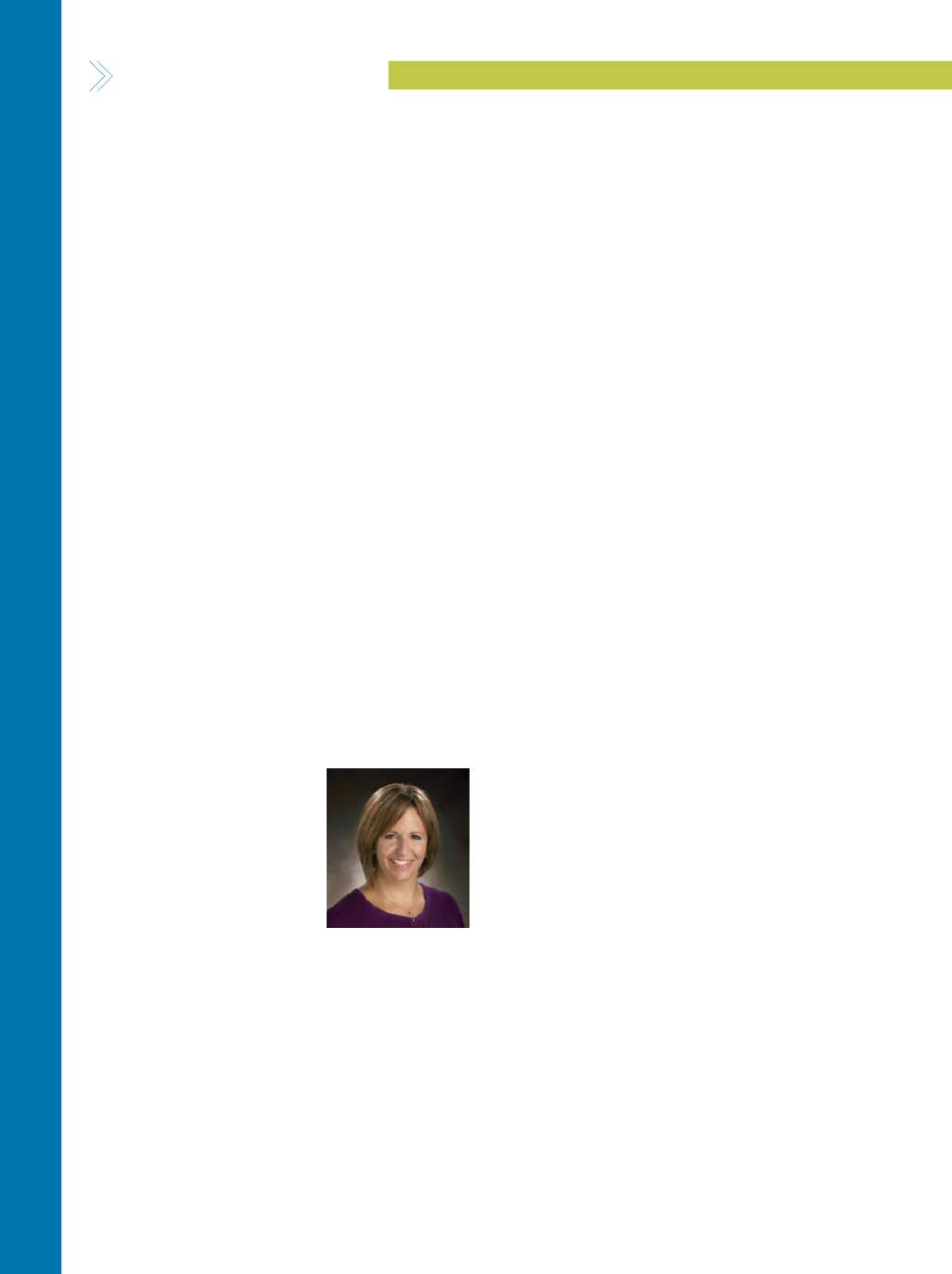

HIGHL IGHTS
A D V A N C E D M A T E R I A L S & P R O C E S S E S | S E P T E M B E R 2 0 1 6
5 4
WOMEN IN ENGINEERING
EMERGING
PROFESSIONALS
EPC Announces Emerging Materials
Professionals Symposium at MS&T
The Emerging Professionals Committee (EPC) is orga-
nizing the 9th annual “Perspectives for Emerging Materi-
als Professionals” symposium at MS&T16 in Salt Lake City,
October 23-27. The Symposium is an excellent opportunity
for new professionals in the field of materials science and
engineering (MSE) to see what career paths are available.
Given the variety of fields that MSE encompasses—every-
thing from medical devices and instrumentation to heavy
industrial equipment, consumer electronics devices, and
more—finding the right spot within the materials world
can be unclear. The symposium will bring speakers and
panelists together to share insights from years of experi-
ence in a variety of sectors including military, aerospace,
medical devices, and more across academia, industry, and
national labs.
Speakers and panelists will also share tips on profes-
sional development, ways to meet goals, the importance of
diversity, emerging opportunities in computational mod-
eling, and taking on management roles. ASM’s incoming
president, Dr. William Frazier, FASM, will deliver the keynote
presentation and highlight opportunities that exist for MSE
professionals. For more information or to get involved in
future symposia, contact Andrew DeVillier at andrew.devil-
lier@integralife.com.
WOMEN IN
ENGINEERING
This new profile series intro-
duces leading materials scientists
from around the world who hap-
pen to be females. Here we speak
with Marissa Reigel, principal engi-
neer for Savannah River National
Laboratory (SRNL).
What is your engineering background?
I have my B.S. and Ph.D. in metallurgical and materi-
als engineering from the Colorado School of Mines. During
undergrad, I had internships at a Chevron gas refinery and
NASA Glenn Research Center, both of which verified that
I had made the right choice of majors. However, I guess
you could say that my engineering background goes back
even further since I was always helping my dad with his
business, which required creative technical solutions to
get telephone and computer wiring from one place to
another.
What attracted you to engineering?
I really like the problem solving and continual learn-
ing aspects of engineering. I have always been interested in
learning how and why things behave the way they do, so in
that sense, being a materials engineer is the perfect fit for
me. Every project I work on, I have had to learn something
new, which is another thing that is so appealing about engi-
neering. There is always something new to learn or gain a
deeper understanding of.
What are you working on now?
My work centers on the processing, immobilization,
and disposition of legacy nuclear waste. This year, my pri-
mary project is establishing erosion and corrosion wear
allowances for a nuclear waste processing facility being built
in Washington State. I am also working on two additional
projects: The first is using additive manufacturing to assist
with tritium processing at the Savannah River Site and the
second is investigating novel methods to better retain prob-
lematic contaminants in immobilized nuclear waste.
What does your typical workday look like?
I’m not sure that I have a typical workday. Currently I
am doing a lot of traveling but when I am back at SRNL, I am
either in the laboratory, writing reports, or attending meet-
ings. It depends on the stage of the projects I amworking on.
What part of your job do you like most?
I like that the challenge and diversity of my job requires
me to expand outside my comfort zone. I am involved with
several different projects that keep my day-to-day techni-
cally interesting and challenge me to learn new things.
If a young person approached you for career advice
about pursuing engineering, what would you tell them?
Go for it! There are so many opportunities in science
and engineering that you can define your own career path. I
would encourage them to talk to experienced people in the
field they are interested in. There is so much you can learn
in school, but do not underestimate the knowledge gained
from hands-on experience and learning through mentoring.
Hobbies?
Volleyball, softball, hanging out with my dogs and hus-
band, hiking, and renovating my house.
Last book read?
I am in the middle of “Skunk Works” by Ben Rich and
Leo Janos. I highly recommend it for anyone with an inter-
est in engineering and spy novels.
ASM’s Women in Materials Engineering Committee is
actively seeking candidates for award nominations. Contact
vicki.burt@asminternational.org.
Reigel


















